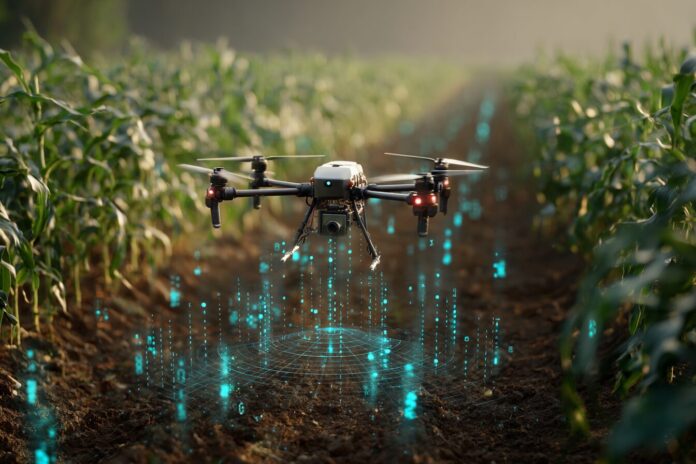The Sky’s Not the Limit — It’s the New Frontier for Transformer-driven UAVs
In recent years, millions have marveled at the advances in artificial intelligence, especially with the emergence of Transformer models. These innovative neural network architectures have rapidly moved beyond natural language and image processing to revolutionize robotics. Most importantly, Uncrewed Aerial Vehicles (UAVs) – commonly known as drones – are harnessing Transformer models to operate smarter and more autonomously than ever before [1].
Because these models can analyze sequences of data with remarkable precision, they are well-suited to tackling the challenging environment of the sky. Furthermore, advanced computational methods derived from Transformer technologies are unlocking new flight capabilities that were once deemed impossible, paving the way for complex tasks such as real-time mapping, aerial surveillance, and precision agriculture.
Why Transformers Are the Breakthrough AI for Flying Robots
Transformers are designed to grasp context and track intricate dependencies in sequential data such as video frames or sensor inputs. Their attention mechanisms, which allow them to focus on crucial segments of information, offer significant advantages over older models like CNNs and RNNs [4]. Most importantly, this intrinsic focus drives sharper object recognition and effective decision-making under dynamic flight conditions.
Besides that, these models require fewer labeled datasets because they can learn from vast amounts of unlabeled data streaming from various sensor feeds. Therefore, drones employing Transformer models rapidly adapt to new and unforeseen conditions. Such flexibility is essential for modern autonomous navigation and real-time response in fluctuating environments.
Transformer-powered UAVs: Real-world Impact and Emerging Applications
Transformer-based architectures have significantly enhanced the operational capabilities of aerial robots. Today’s drones rely on intelligent perception and fast decision loops to perform critical missions. From monitoring crop health in vast farmlands to executing complex search-and-rescue operations, UAVs are benefiting from a level of autonomy never seen before [3].
Moreover, industries such as logistics and urban planning are witnessing dramatic improvements. For example, in precision agriculture, drones can use Transformer-powered vision systems to monitor crop growth and detect early signs of disease. Similarly, autonomous navigation systems integrate multimodal data to chart safe and efficient flight paths even in challenging urban environments [1].
What’s Under the Hood: Key Transformer Innovations for UAVs
Several innovative Transformer variations are being integrated into UAV systems. CNN-Transformer hybrids combine local feature extraction with global contextual understanding, greatly enhancing the drone’s visual perception during high-speed flight [1]. Reinforcement Learning Transformers, for example, allow UAVs to learn from iterative trial-and-error approaches in controlled simulations and real-world tests.
Besides that, multimodal sensor fusion is transforming the way drones interact with their surroundings. By merging outputs from cameras, LiDAR, and infrared devices, Transformer models create unified, context-aware environmental maps. Such models also incorporate edge enhancement and layered attention algorithms, ensuring accurate tracking and object classification even under challenging visual conditions [3].
Transformers vs. Traditional AI Models: Why They Win for UAVs
When comparing Transformer models to traditional AI architectures such as CNNs or RNNs, several key differences emerge. Most importantly, Transformers offer superior contextual understanding with their attention mechanisms. Because they focus on both local and global features, these models excel in dynamic environments where adaptability is essential.
Additionally, Transformers prove to be far more efficient in utilizing unlabeled data, a considerable advantage over conventional models that require extensive annotated datasets. Therefore, this efficiency not only accelerates the learning process but also significantly improves real-time performance – a critical attribute for UAVs tasked with fast and accurate decision-making.
Challenges and Frontiers in Transformer-guided Drone Autonomy
Despite significant breakthroughs, several challenges remain in deploying Transformer-guided drones. Most importantly, computational efficiency and energy consumption are major hurdles when transitioning these models to lightweight edge devices. Because drones operate in resource-constrained environments, developers are exploring streamlined architectures and advanced hardware accelerators to address these limitations [1].
Furthermore, safety and security issues demand urgent attention. There is a pressing need for robust datasets, standardized evaluation metrics, and improved simulation environments to ensure reliable UAV performance. Besides that, safeguarding sensitive data against adversarial attacks is crucial as drones become more interconnected and integrated into smart city infrastructures.
The Future: Where Are Robots in the Skies Headed?
The future of Transformer-powered drones looks exceptionally promising. According to leading research and industry experts, the next decade will likely witness fully autonomous UAV fleets that collaborate and learn from shared experiences. Therefore, innovations in faster convergence, safer operation protocols, and depth in multimodal perception are set to transform the aerial robotics landscape [1].
Most importantly, advanced Transformer models are expected to seamlessly integrate AI-driven air, land, and sea robotics. As these technologies merge, expect coordinated responses to environmental challenges and enhanced operational capabilities in both urban settings and remote areas. Because the evolution of Transformer models is rapid, they are already laying the groundwork for smarter drones that not only navigate the skies but also contribute to a more interconnected digital ecosystem.
Further Reading & References
For readers interested in diving deeper into the world of Transformer models and their application in UAV technology, several insightful resources are available online. These references provide comprehensive details on recent advances, methodological innovations, and practical implementations in real-world settings.
Among the recommended readings is an in-depth article on recent advances in Transformer and large language models for UAV applications, along with pieces that explore efficient edge enhancement, autonomous navigation, and object tracking across multiple domains. Each of these resources contributes to building a robust understanding of how modern Transformer architectures are revolutionizing aerial robotics.
- Recent Advances in Transformer and Large Language Models for UAV Applications
- Efficient Vision Transformers for Drone-Based Remote Sensing
- NVIDIA: What Is a Transformer Model?
- End-to-End Multiple Object Tracking in High-Resolution UAV Imagery
- How Transformer-Based Networks Are Improving Robotics and Self-Driving Cars



